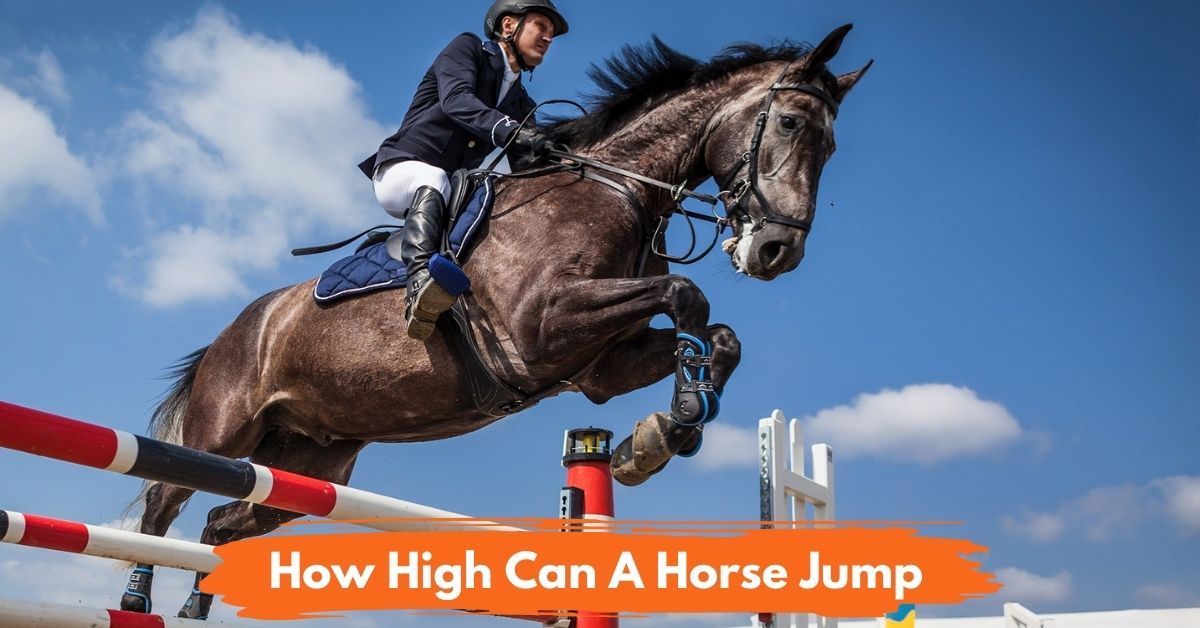
How high can a horse jump? The average untrained horse can jump at an average height of 2 to 4 feet. While it may be possible to train your horse to jump higher, it depends on the horse’s breed, age, fitness, and type of obstacle.
Horses are not just fast runners, they are also excellent jumpers. The horse’s ability to jump has been a key factor in its survival throughout the centuries.
How high a horse can jump is a long and winding discussion involving many areas. With that said, this article will go over some notable questions regarding this topic.
Horse Jumping Process
Horses are excellent jumpers. But that doesn’t come naturally. In fact, it requires training and practice.
A common misconception that most people believe is that horses love to jump. This isn’t true—horses jump because they are forced to do so.
It all starts with teaching your horse how to jump. To do so, you’ll need to go through five key phases:
Phase 1: The Approach
The first phase is crucial as it sets the tone for the rest of the jump. In this stage, you’ll need to give your horse the correct commands, so it knows what’s expected of it.
You’ll also need to ensure you’re in the correct position. This means that you should sit up straight with your eyes looking ahead to the horse’s jump.
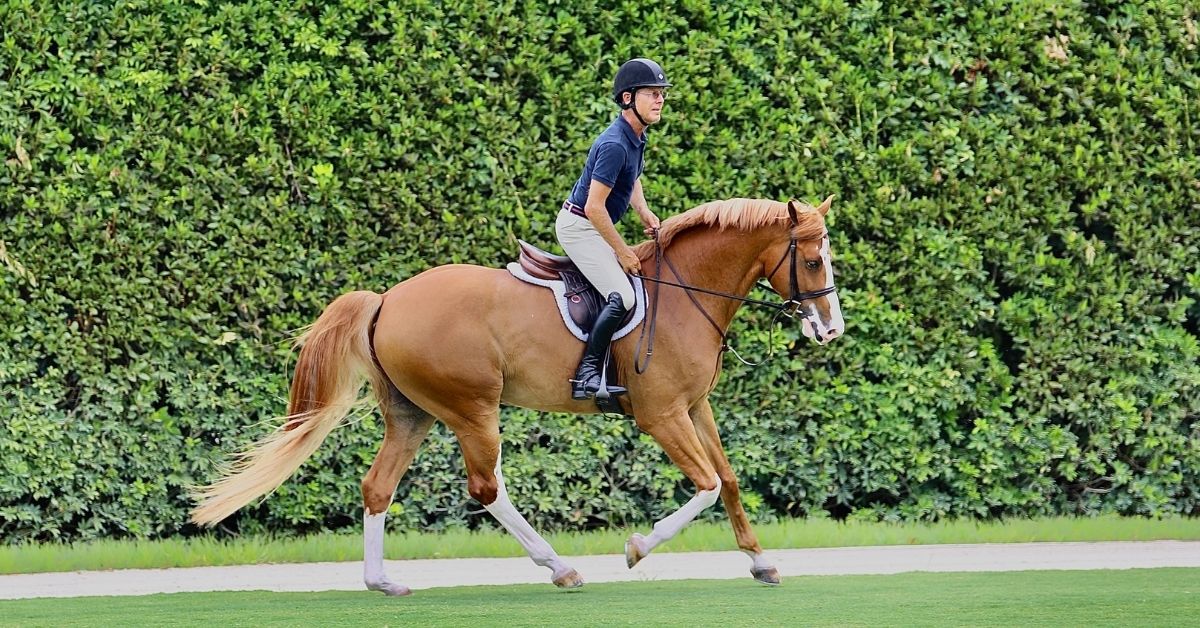
This will also cover gait and phase, which are both important in getting the right speed and rhythm for your horse.
The gait to use depends on the horse and how comfortable it is with jumping. You’ll want to use a slow gait if your horse is a beginner. However, if your horse is more experienced, you can use a faster gait.
The canter is the sweet spot and is the usual gait option your horse should utilize during a jump. Canter is a medium-paced gait that will allow your horse to get some speed without going too fast.
During the first phase, it’s also important to condition your horse for the task at hand. That way, your horse will be less likely to get scared or anxious when it’s time to jump.
You can do this by introducing your horse to small jumps. Start with something low, such as a cross-rail, and work your way up.
Phase 2: Takeoff
The takeoff is always daunting for both you and your horse. In this phase, you’ll need to give your final commands to your horse.
Once you’re in the correct position, you’ll need to tell your horse when to take off. Again, the command should be sharp and concise so that your horse knows it’s time to jump.
This is also the phase where you’ll need to ensure that your horse has enough speed and momentum to clear the jump.
As the rider, you are in full control of the entire motion. However, it’s also important that you feel your horse and spark their interest in performing the takeoff.
While you will primarily guide your horse, it’s important that the horse takes over in the last few strides before the jump. However, remember that this will take a few tries before your horse gets comfortable.
Some horses are good decision-makers, while some need a little more help. If your horse struggles with the takeoff, you can help in decision-making by using your voice and positioning your body.
However, you shouldn’t decide on your horse. There’s a fine line between helping and overdoing it.
By letting your horse decide independently, you’re helping them develop a sense of confidence. As a result, they’re more likely to react accordingly when they need to perform a jump.
Phase 3: In The Air
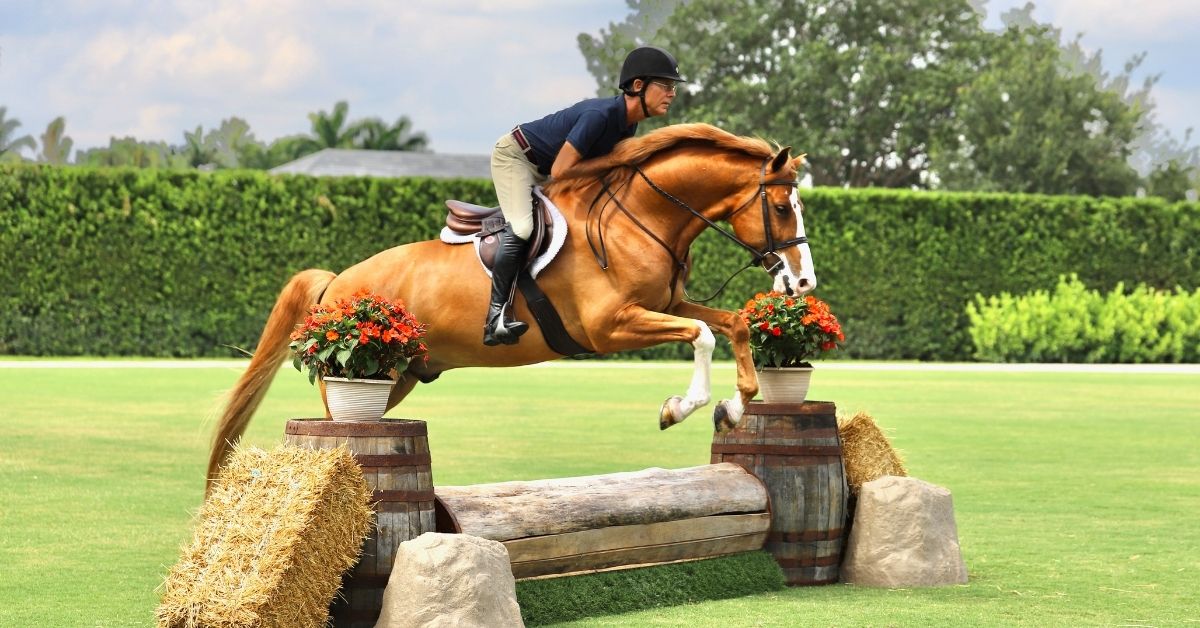
This is the shortest phase out of all of them. It’s the moment when your horse leaves the ground and propels itself over the jump.
Focus, balance, and rhythm are key during this phase. You’ll need to keep your eyes focused on the jump to guide your horse properly.
However, you should avoid distracting your horse during this phase as it can cause them to panic and lose balance.
Be mindful of your position as it will be a factor in the quality and success of the jump. Your horse doesn’t appreciate you throwing your weight around. So, you must stay centered and in sync with your horse’s movement.
It’s also important to keep a steady rhythm during this phase. Avoid making any unnecessary movements, and keep up with what your horse is doing.
Phase 4: Landing
This is arguably the most important phase, as it’s where things can go wrong very easily. A bad landing can cause your horse to trip, fall, and possibly get injured—the same goes for you!
As the rider, you need to be prepared for the landing. You need to have a quiet and stable position to properly absorb the shock of the landing.
Meanwhile, your horse will need to tuck its legs properly to avoid any injury. You can help your horse in this phase by maintaining a steady rhythm and avoiding sudden movements.
It’s also important to note that the landing surface will play a role in this phase’s success. Avoid uneven or soft surfaces, which can cause your horse to trip or lose balance.
A good landing surface is flat and firm. This will help reduce the impact of the landing and prevent any injury.
After your horse lands, it’s important to have a positive first stride, as it will ensure that it doesn’t lack energy. The landing creates a lot of tension in the horse’s body, and a good first stride will help release that tension.
Phase 5: The Getaway
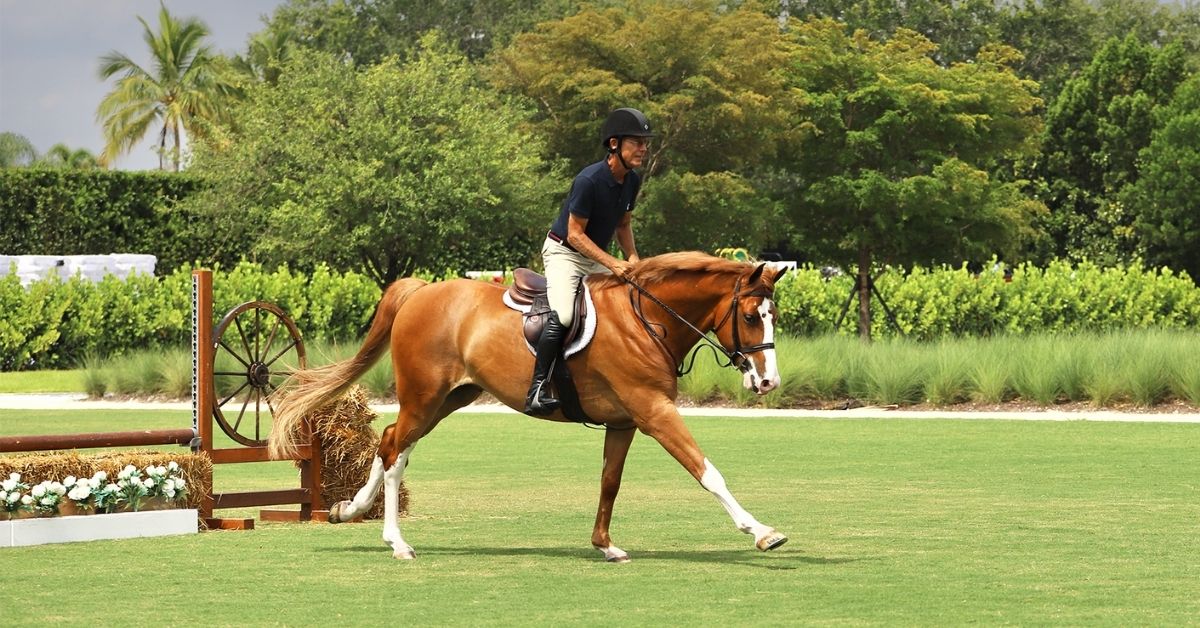
After successfully completing the jump, it’s important that you and your horse don’t relax just yet. There’s still one more thing to do—the getaway.
This is the final phase of jumping, and it’s just as important as the others. The getaway is the moment where you and your horse transition from the jump to the rest of the course.
The getaway is all about maintaining momentum and balance. You don’t want to lose any speed or rhythm, so you must keep up with your horse.
Avoid sudden braking or slowing down, as it can cause your horse to lose balance. Instead, gently guide your horse in the desired direction and let it naturally slow down.
The getaway is the perfect opportunity to give your horse a little reward. After successfully completing the jump, they deserve it! A little neck pat to show appreciation will do the trick.
How High Can A Horse Jump On Average?
The average untrained horse can leap at an average of about three feet. Meanwhile, competitive jumping horses undergo training and can jump an average of seven feet.
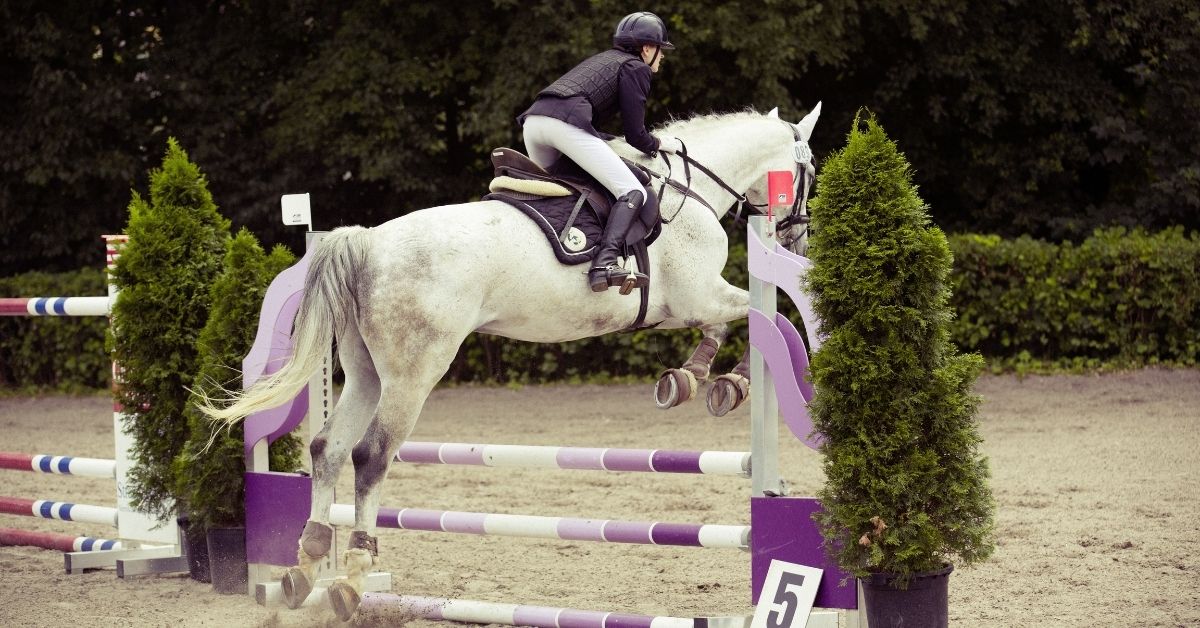
Competitive horses are able to do this because of their strength, agility and balance. Training helps them become more comfortable over obstacles and allows them to increase the height that they can jump.
The breed of horse also plays an important role in how high a horse can jump. Thoroughbreds, for instance, are renowned for their jumping ability and have been known to clear heights of up to 8 feet.
Famous High Jump Records
Now that you know how high a horse can jump, let’s take a look at some of the most famous high jump records in history.
The world record for the highest horse jump is 8 feet 1.25 inch (2.46 m). This was set by a horse named Huaso in 1949.
Huaso went through rigorous training to achieve this record. His rider, Alberto Larraguibel Morales, worked with him day and night to perfect his skills.
Huaso first set the Chilean record for the highest jump by a horse. He then proceeded to set the South American Record and, finally, the World Record.
Another famous horse jumper is a Thoroughbred named Optiebeurs Golo. He set the World Puissance Record at Chaudfontaine in Belgium in June 1991.
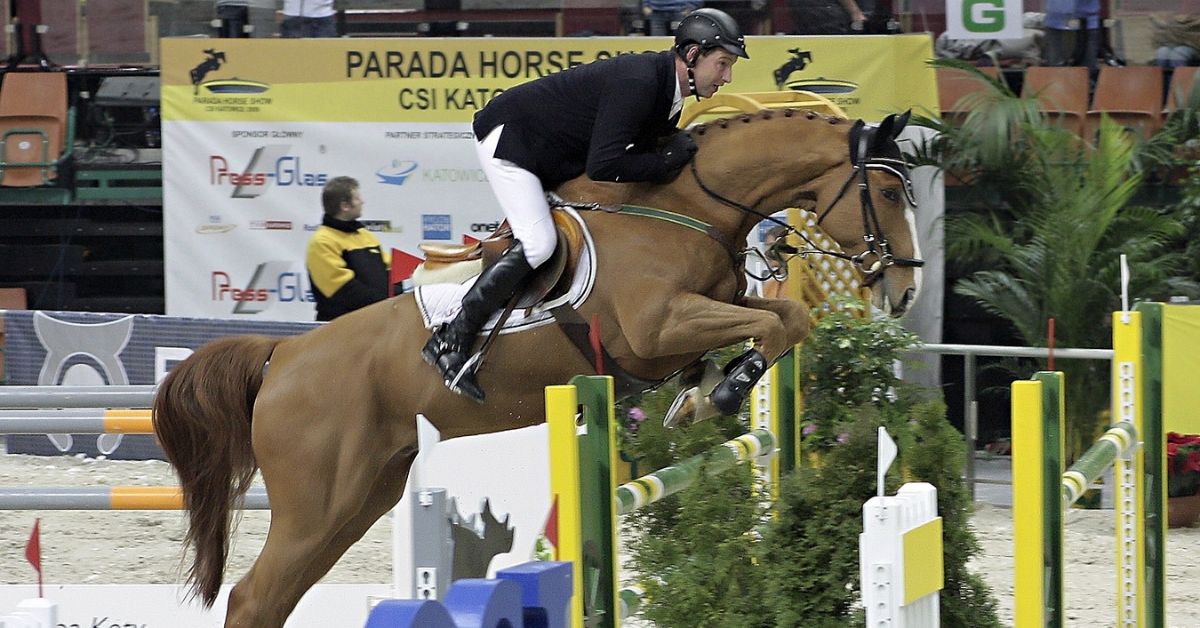
Optiebeurs Golo and his rider, Franke Sloothaak, managed to clear 7 feet 10.5 inches (2.40 meters), breaking the previous record, which was at 2.35 meters. The previous record was set by Sloothaak; although he rode a different horse named Leonardo.
The North American Record was set in 1983 by a 9-year-old Quarter Horse named Sweet N’ Low. Ridden by Anthony D’Ambrosio, Sweet N’ Low managed to clear 7 feet 7.5 inches (2.34 meters) during the Sunkist international-open jumper Puissance class.
Finally, the British Horse Jumping Record was set by a horse called Lastic. Ridden by Nick Skelton, Lastic managed to clear 7 feet 7.56 inches (2.32 meters) back in 1978. He set the record during the Puissance class at Olympia.
Here’s a table detailing the highest horse jumps in history:
| Equine Jumping Records | Horse Name | Rider Name | Height | Year |
|---|---|---|---|---|
| World Record | Huaso | Alberto Larraguibel Morales | 8 feet 1.25 inches | 1949 |
| Puissance World Record | Optiebeurs Golo | Frank Sloothaak | 7 feet 10 inches | 1991 |
| North American Record | Sweet N’ Low | Anthony D’Ambrosio | 7 feet 7.5 inches | 1983 |
| British Record | Lastic | Nick Skelton | 7 feet 7.56 inches | 1978 |
What’s The Highest Jump In Show Jumping?
On February 5, 1949, captain Alberto Larraguibel and his horse Huaso set the world record for clearing the highest obstacle.The record-breaking Thoroughbred stallion and his Chilean rider cleared a fence measuring 8 feet 1.25 inches (2.47 meters) high.
This record still stands today as the highest jump ever completed in show jumping. It’s an astounding achievement that continues to inspire horse owners and riders around the world.
How High Do Horses Jump In The Olympics?
The Olympic games are considered the world’s foremost sports competition, the equestrian sports held at the event are Dressage, Show Jumping and Eventing with both team and individual medals awarded for each discipline.
In Olympic showjumping competitions, the horse jumps a course of 10 to 16 obstacles, with heights up to 1.6 meters (5 feet 3 inches) and spreads of up to 2.0 metres (6 ft 7 in).
There’s also a triple bar obstacle that can be 2.2 meters (7.2 feet) wide for the horse to clear. Meanwhile, the water jump distance is 4.5 meters (14.8 feet).
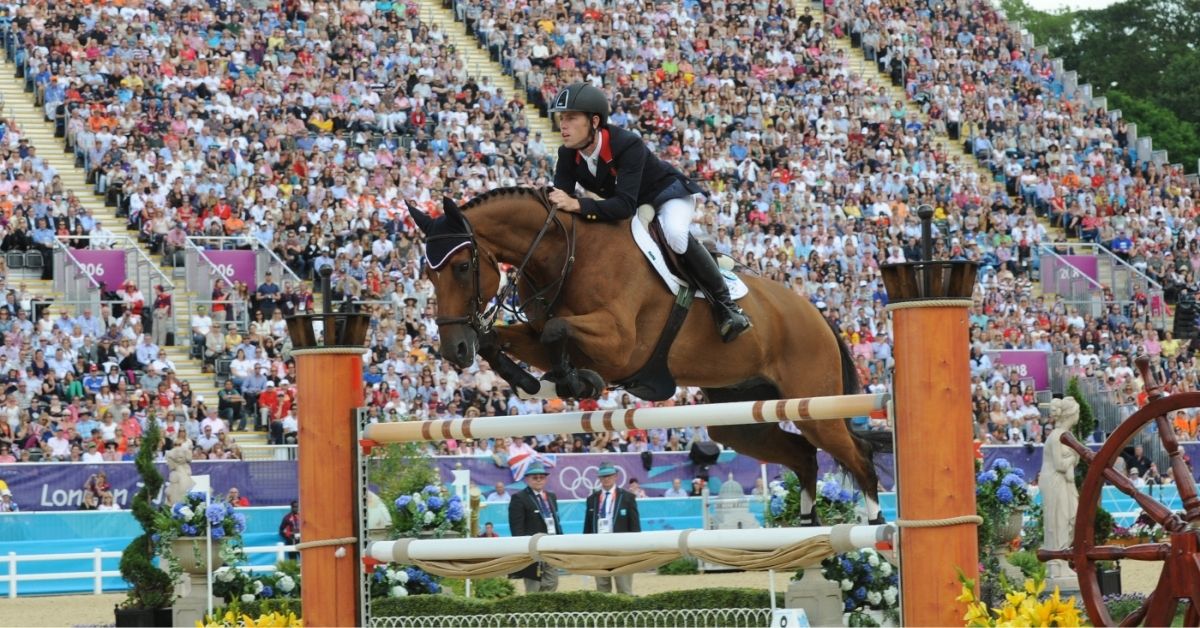
Factors Affecting Jump High
Many factors are involved in how high a horse can jump. These include the horse’s breed, age, fitness, and obstacle type.
Horse Breed
Some horse breeds are simply better jumpers than others. For example, thoroughbreds and quarter horses are known for their exceptional jumping abilities.
Some other horse breeds known for their jumping abilities include the Arabian, Anglo-Arabian, Hanoverian, Connemara, and Trakehner.
Age
Young horses tend to be better jumpers than older ones. This is because they’re more agile and have more energy.
In addition, younger horses haven’t sustained as many injuries as older ones. This means that they’re less likely to be hesitant or fearful when it comes to jumping.
Fitness
A horse’s fitness levels have a direct impact on how high it can jump. A horse that’s in peak physical condition will be able to jump higher than one that’s out of shape.
On the other hand, overweight horses will have a harder time jumping high. This is because they have more weight to carry, making it difficult to get enough height.
Horse Measures
In the equine world, taller horses dominate the sport of jumping. This is because they have a longer stride, which gives them more momentum and height.
Most trainers recommend horses that are around or above 16 hands (64 inches or 1.62 meters) tall. These horses typically have no problem clearing jumps around 6 feet tall.
Meanwhile, heavy horses can still perform a jump successfully. However, they will burn more energy while doing so.
Injuries Associated With Jumping
Show jumping horses are prone to joint injuries, such as arthritis. This is because they put a lot of stress on their joints when jumping.
Older horses and those overweight are more susceptible to these types of injuries. This is why it’s important to make sure that your horse is in peak physical condition before you start jumping.
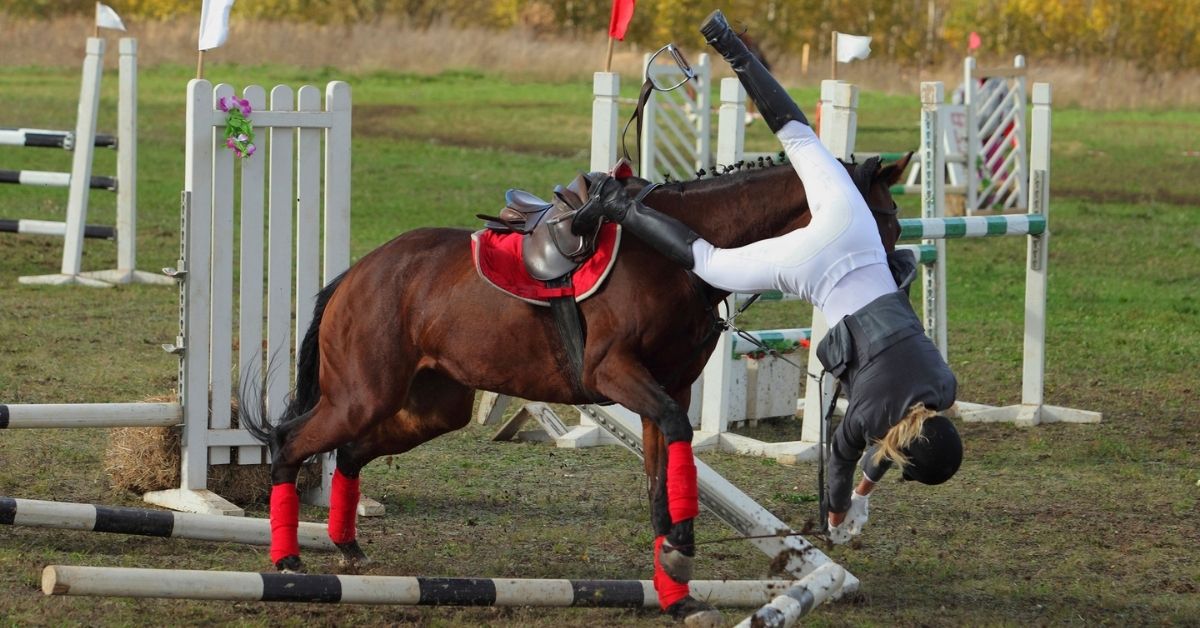
Here are other common horse injuries associated with jumping:
Suspensory Ligament Injury
Suspensory ligament injury is a common injury in show jumpers. It occurs when the horse’s suspensory ligaments, which support its fetlock, are overstretched.
Carpal Joint Injury
Also known as “slipped carpus” this injury occurs when the horse’s carpal joints, which are located in the horse’s wrists, are damaged.
Front Feet Pain
Horses that jump often experience pain in their front feet. This is because they land on their toes, which can cause the horse to feel pressure in its feet.
To help prevent this, many riders use shoes that have thicker toes. This helps distribute the horse’s weight more evenly and reduces the pressure on its feet.
Osteoarthritis
Osteoarthritis is a common condition that affects horses that are constantly doing physical activities without proper rest and nutrition. It’s caused by the breakdown of the horse’s cartilage, which leads to pain and inflammation.
Many riders use joint supplements to help prevent this condition. However, the best way to prevent osteoarthritis is to ensure that your horse is in peak physical condition.
Hock Injuries
Hock injuries occur when the horse’s hock, the joint located in the hind leg, is damaged.
There are many different types of hock injuries, including strains, sprains, and fractures. Many of these injuries can be prevented by using the proper jumping technique.
Frequently Asked Questions
Have some more things in mind that you want to know about how high a horse can jump? Check out some frequently asked questions and their corresponding answers:
Why Does A Horse Refuse To Jump?
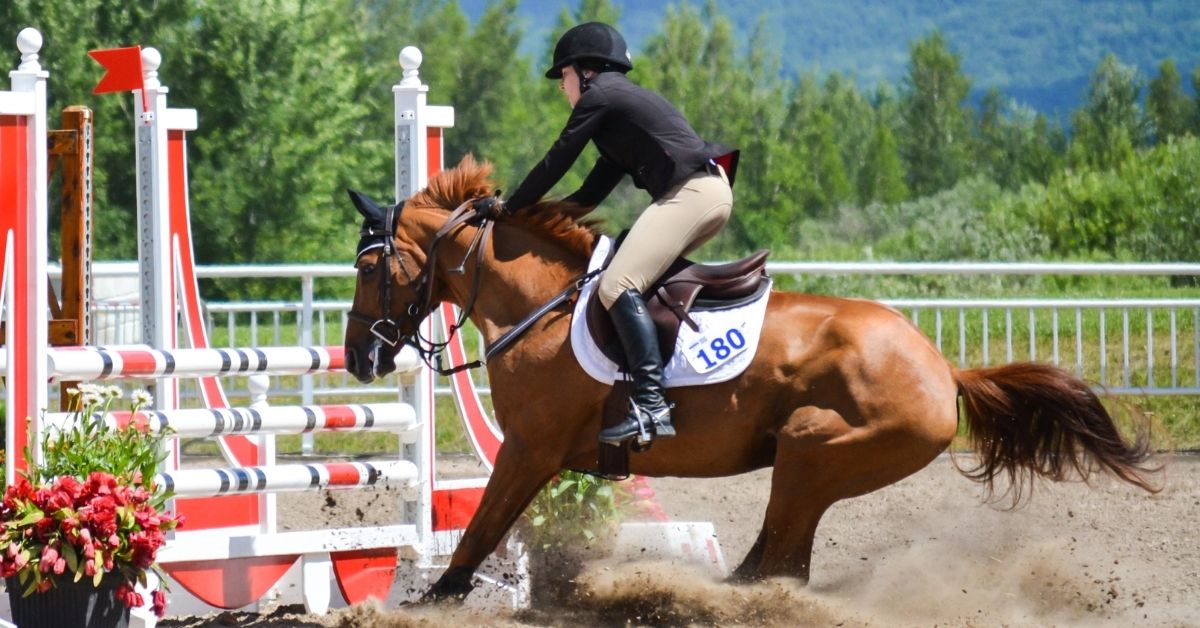
There are many reasons why a horse might refuse to jump. Some horses are hesitant because they’re afraid of heights. Others might not be feeling well or might be distracted by something.
Sometimes, a horse will refuse to jump because it’s not properly trained. If you’re having trouble getting your horse to jump, make sure that you’re using the proper training techniques.
What Are The Things Horses Jump Over?
Horses can jump over various obstacles, including rails, gates, and fences. They can also jump over the water and other horses.
Sometimes, horses jump on poles or Cavaletti, which are low jumps that help to train the horse.
How High Can A Quarter Horse Jump?
Quarter horses are a type of horse that is known for their speed and agility. They can jump up to 2 meters (6.56 feet) high.
Quarter horses are known for their jumping ability and are often trained for show jumping and other riding competitions.
Conclusion
You are partially right if you thought that horses are fond of jumping. Like any other animal, they are physically capable of doing so and might even enjoy it to some extent.
But the willingness and ability to jump high depend on various other factors. So while horses are naturally great jumpers, they won’t develop or even acquire this skill without proper training.
